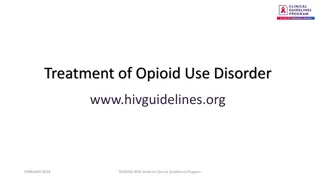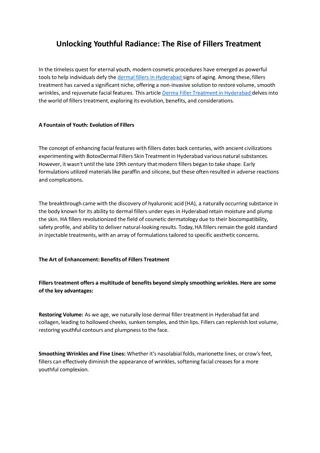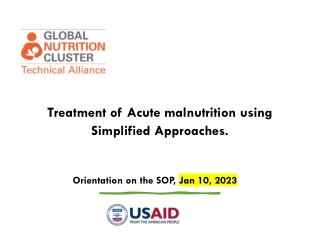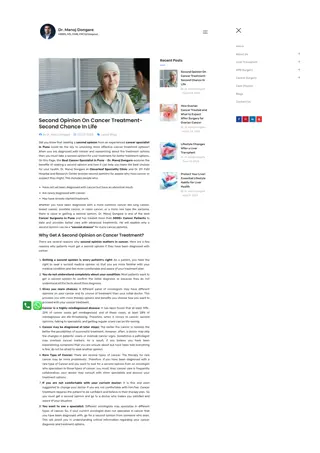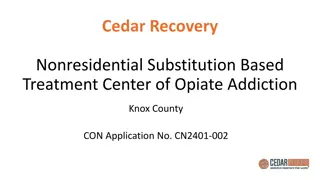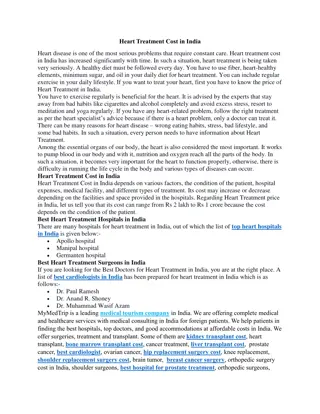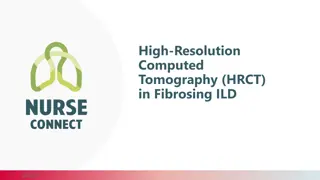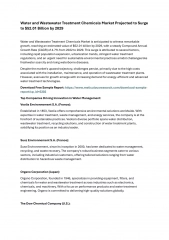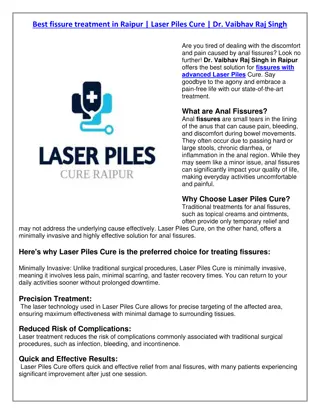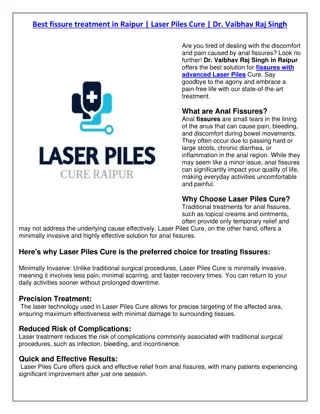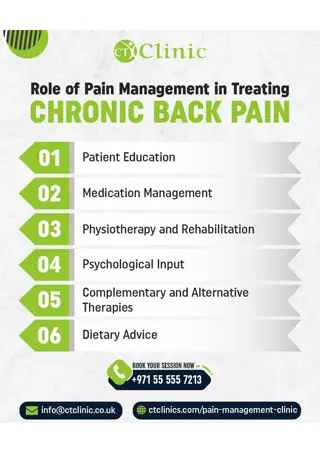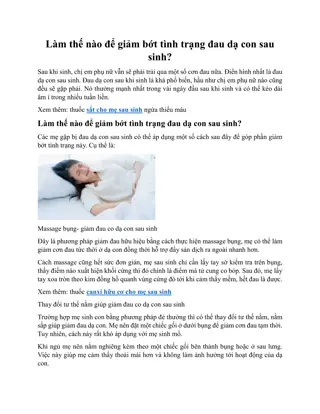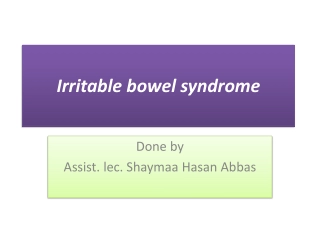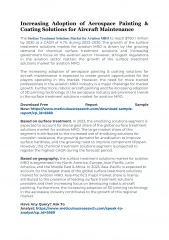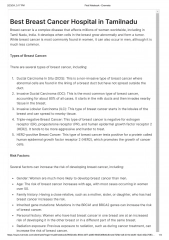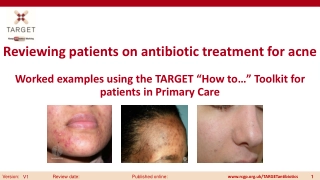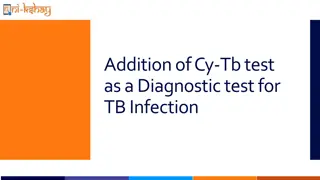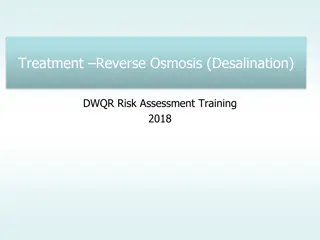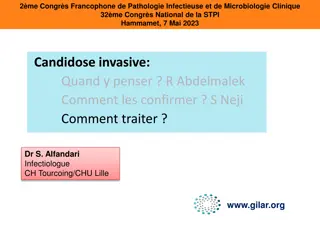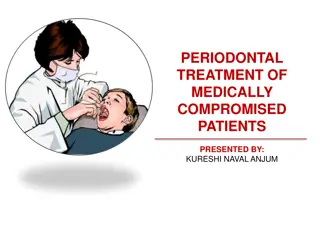APPROACH TO THE TREATMENT OF INFLAMMATORY POLYARTHRITIS
Inflammatory polyarthritis can have various causes, including infections, systemic rheumatic diseases, crystal-induced arthritis, vasculitides, and more. Dr. Afsar Sayeeda, a consultant internist and rheumatologist, emphasizes early diagnosis and intervention in conditions like rheumatoid arthritis to prevent irreversible joint damage. Treatment goals include reducing inflammation, relieving symptoms, preventing damage, improving physical function, and reducing long-term complications. Nonpharmacologic therapies, along with patient education and lifestyle modifications, play a crucial role in managing these conditions effectively.
APPROACH TO THE TREATMENT OF INFLAMMATORY POLYARTHRITIS
PowerPoint presentation about 'APPROACH TO THE TREATMENT OF INFLAMMATORY POLYARTHRITIS'. This presentation describes the topic on Inflammatory polyarthritis can have various causes, including infections, systemic rheumatic diseases, crystal-induced arthritis, vasculitides, and more. Dr. Afsar Sayeeda, a consultant internist and rheumatologist, emphasizes early diagnosis and intervention in conditions like rheumatoid arthritis to prevent irreversible joint damage. Treatment goals include reducing inflammation, relieving symptoms, preventing damage, improving physical function, and reducing long-term complications. Nonpharmacologic therapies, along with patient education and lifestyle modifications, play a crucial role in managing these conditions effectively.. Download this presentation absolutely free.
Presentation Transcript
APPROACH TO THE TREATMENT OF APPROACH TO THE TREATMENT OF INFLAMMATORY POLYARTHRITIS INFLAMMATORY POLYARTHRITIS DR.AFSAR SAYEEDA CONSULTANT INTERNIST & RHEUMATOLOGIST HEAD, CLINICAL TEACHING UNIT . KING KHALID UNIVERSITY HOSPITAL KSUMC, RIYADH, KSA . FRCP
CAUSES OF INFLAMMATORY POLYARTHRITIS CAUSES OF INFLAMMATORY POLYARTHRITIS INFECTIONS - VIRAL/ BACTERIAL (H PARVOVIRUS B19, CMV,CSV.HEPB.HIV,EBV,MUMPS,VZV ,ADENO.ENTERO.HHV) STAPH AUREUS, GONORRHOEA,GRAM NEGATIVE BACILLI DIRECT/INDIRECT( REACTIVE ARTHRITIS-SHIGELLA,SALMONELLA,CHLAMYDIA, YERSINIA,CAMPYLOBACTER,GROUP A STREPTOCOCCI, TROPHEREMA WHIPPELI ,WHIPPLES, INFECTIVE ENDOCARDITIS ) SYSTEMIC RHEUMATIC DISEASE RA/SLE/AOSD/JRA CRYSTAL INDUCED ARTHRITIS -Gout / Pseudogout SYSTEMIC VASCULITIDES HSP/PAN/WG SERONEGATIVE SPONDYLOARTHROPATHEIS - Psoriatic arthritis , IBD related (enteropathic) , Reactive arthritis & Ankylosing Spondylitis
INFLAMMATORY VS NONINFLAMMATORY INFLAMMATORY VS NONINFLAMMATORY INFLAMMATORY MORNING STIFFNESS OF MORE THAN AN HOUR NONINFLAMMATORY LESS THAN AN HOUR LOW GRADE TEMPERATURE, FATIGUE, SKIN RASH SIGNS OF INFLAMMATION- RUBOR ( REDNESS) BONY PROLIFERATION HEBERDENS NODES, BOUCHARDS NODES) WARMTH( CALOR). SWELLING( EFFUSION-TUMOUR), TENDERNESS( DOLOR) LOSS OF FUNCTION. LABS ESR, CRP ,ANAEMIA OF CHRONIC DISEASE, RF, ANTICCP, ANA . NORMAL LABS JOINT SPACE NARROWING, SUBCHONDRAL SCLEROSIS,OSTEOPHYTES . SYNOVIAL FLUID < 200 CELLS 50% NEUTROPHILS X RAYS- EROSIONS, UNIFORM JOINT SPACE NARROWING. SYNOVIAL FLUID ANALYSIS -> 2000(NONINFECTIOUS), > 50000( INFECTIOUS)PREDOMINANTLY NEUTROPHILS.
RHEUMATOID ARTHRITIS RHEUMATOID ARTHRITIS ACUTE AND CHRONIC INFLAMMATION IN SYNOVIUM CAUSING PROLIFERATION AND DESTRUCTION OF JOINT TISSUES. TO ACHIEVE THE BENEFITS OF INTERVENTION WITH EARLY DMARDS DEPENDS THE DIAGNOSIS OF RA AS EARLY AS POSSIBLE. RECOGNISE RA EARLY BEFORE IRREVERSIBLE JOINT INJURY OCCURS.
THE GOALS OF RA TREATMENT ARE TO: STOP INFLAMMATION(PUT DISEASE IN REMISION) RELEIVE SYMPTOMS PREVENT JOINT AND ORGAN DAMAGE IMPROVE PHYSICAL FUNCTION AND OVERALL WELLBEING REDUCE LONG TERM COMPLICATIONS
NONPHARMACOLOGIC THERAPIES NONPHARMACOLOGIC THERAPIES PATIENT EDUCATION REST,EXERCISE,PHYSICAL AND OCCUPATIONAL THERAPY NUTRITIONAL AND DIETARY COUNSELLING INTERVENTIONS TO DECREASE THE CV RISKS, eg: SMOKING CESSATION IMMUNISATIONS TO DECREASE THE INFECTIOUS COMPLICATIONS OF IMMUNOSUPPRESSIVE THERAPIES.
USE OF ANTIINFLAMMATORY THERAPY,INCLUDING NSAIDS & GLUCOCORTICOIDS TO HELP CONTROL THE SYMPTOMS & IMPROVE FUNCTION UNTIL DMARDS TAKE EFFECT. ACHEIVEMENT AND MAINTENANCE OF TGHT CONTROL OF DISEASE ACTIVITY , DEFINED AS REMISSION OR A STATE OF LOW DISEASE ACTIVITY.
2016 EULAR Recommendations -12 Patients with active disease should be monitored every 3 months, and treatment should be adjusted if there is no improvement at 6 months Methotrexate (MTX) is recommended as first-line therapy; sulfasalazine (SSZ) or leflunomide can be substituted if there are contraindications to MTX Tumor necrosis factor (TNF) inhibitors are no longer the only biologics recommended for patients with an insufficient response to MTX; all biologics are considered to be similarly effective Biologics should be combined with disease-modifying antirheumatic drugs (DMARDs)
Disease Activity Recommendations Administer DMARD monotherapy in patient with low-high disease activity If disease activity remains moderate /high despite DMARD monotherapy, use combination DMARDs or a TNF inhibitoror a non-TNF biologic Early RA (<6 months) (Notable change from 2012 to 2015 guidelines: The 2015 guidelines do not recommend initial combination DMARD therapy in early RA with moderate to high disease activity) If disease activity remains moderate or high despite DMARD monotherapy, ACR guidelines recommend one of the following: Combination DMARDs Add an anti-TNF biologic Non-TNF biologic Tofacitinib Established RA (=6 month or meets 1987 ACR RA classification criteria) Switch to a non-TNF biologic with or without MTX over another anti- TNFi or Tofacitinib If disease activity remains moderate or high despite use of a single anti-TNF biologic: Use another non-TNF biologic with or without MTX over Tofacitinib If still uncontrolled use Tofacitinib If disease activity remains moderate or high despite use of one anti-TNF biologic and one non-TNF biologic: (Notable change from 2012 to 2015 guidelines: Instead of switching from one anti-TNF biologic to another anti-TNF biologic because of continued activity, it is recommended to change first to a non-TNF biologic)
2015 ACR Guideline for the Treatment of RA Monotherapy: Methotrexate or leflunomide recommended for all patients regardless of disease duration or severity Dual-DMARD combinations: Methotrexate and hydrcosychloroquine recommended for moderate-to-high disease activity; Methotrexate or leflunomide with longer disease duration. Triple-DMARD combinations: Methotrexate,sulfasalazine and hydrcosychloroquine recommended for patients with poor prognostic features and moderate-to-high levels of disease activity. Anti-TNF-alpha agents: Etanercept, infliximad, adalimumab plus methotrexate recommended for patients with early RA(symptoms <3 months) with high disease activity and no history of ever being treated with DMARD. TNF blockers are recommended fo a long disease duration and for those patients who failed to obtain a satisfactory response from methotrexate therapy. Abatacept or rituximab recommended for patients with at least moderate disease activity and poor prognostic indicators following treatment with methotrexate or other DMARDs resulting in inadequate treatment response ACR-American College of Rheumatology; DMARDs- Disease-modifying antirheumatic drugs; RA rheumatoid arthiritis; TNF Tumor necrosis factor -Poor prognosis features include high number of affected joints, pra--- of bonyerosioes, elevated theumatoid factor for C- reactive protein, anticycle
PROGNOSIS PROGNOSIS OUTCOME IN RA IS COMPROMISED WHEN DIAGNOSIS AND TREATMENT ARE DELAYED. OUTCOMES ARE HIGHLY VARIABLE.SOME PATIENTS EXPERIENCE A RELATIVELY SELF LIMITING DISEASE WHILE OTHERS HAVE A CHRONIC PROGRESSIVE ILLNESS. 40% OF THE PATIENTS BECOME DISABLED AFTER 10 YEARS. INTERVENTIONS WITH DMARDS IN VERY EARLY RA( SYMPTOM DURATION OF LESS THAN 12 WEEKS AT THE TIME OF FIRST TREATMENT) GIVES THE BEST OPPURTUNITY FOR ATTEMPTING TO ACHIEVE DISEASE REMISSION.
UNFAVOURABLE PROGNOSTIC FACTORS UNFAVOURABLE PROGNOSTIC FACTORS HLA DR4 GENOTYPE HIGH SERUM TITER OF AUTOANTIBODIES(RF & ACPA) PRESENCE OF EXTRAARTICULAR MANIFESTATIONS LARGE NUMBER OF INVOLVED JOINTS AGE YOUNGER THAN 30 YEARS FEMALE SEX PRESENCE OF SYSTEMIC SYMPTOMS
SYSTEMIC LUPUS ERYTHEMATOSUS SYSTEMIC LUPUS ERYTHEMATOSUS MANAGEMENT DEPENDS ON DISEASE SEVERITY AND DISEASE MANIFESTATIONS. HYDROXYCHLOROQUINE HAS A CENTRAL ROLE FOR LONG TERM TREATMENT IN ALL PATIENTS. DECREASES NUMBER OF FLARES AND PROLONGS LIFE CORNERSTONE OF SLE MANAGEMENT SLE WITH ARTHRITIS NSAIDS, HCC, short courses of STEROIDS.
AOSD AOSD
THANK YOU THANK YOU



